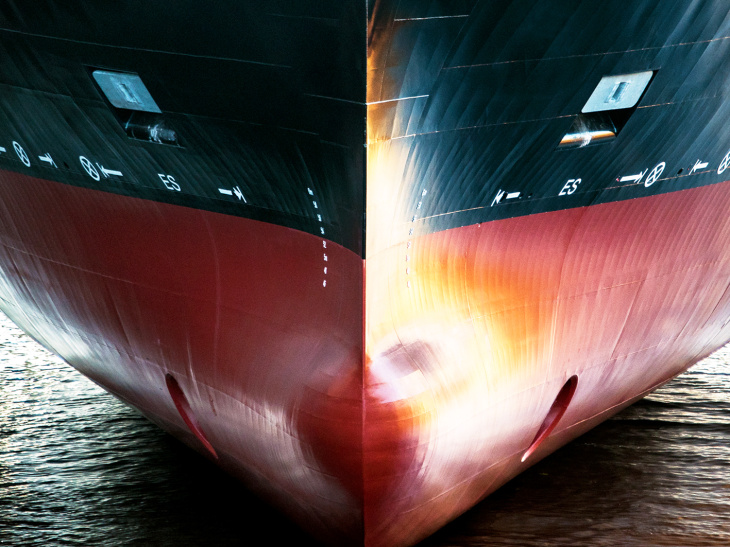Microplastics in the sea: new method
Joint press release by the Helmholtz-Zentrum Hereon and the Federal Maritime and Hydrographic Agency (BSH)

A particle from the coating of a bridge. Photo: BSH/ Marten Fischer
"Particle abrasion not only occurs in road traffic, but also in shipping, for example," explains BSH scientist Dr. Marten Fischer. "Paint coatings against fouling and corrosion consist mainly of plastics. Weathering and wear result in microplastics - particles smaller than five millimeters". But how many particles end up in the sea?
To elucidate this, a research team combined various chemical-analytical and mathematical-statistical methods. "This allows us to detect different types of particles more accurately and distinguish them from each other reliably. This enables us to better assess the potential risk of particles from coatings and paints for the oceans," explains Dr. Lars Hildebrandt, lead author of the recently published study at Hereon.
Such particles could also increasingly enter the marine environment because of the expansion of offshore wind energy and increasing shipping. The study was funded by the Federal Ministry for Digital and Transport (BMDV) in connection with the BMDV expert network. There, abrasion from transport infrastructure and transport itself is being investigated.
Investigation of particles in offshore wind farms

Ships emit paint and coating residues into the water. Photo: BSH
The new method will be applied soon. Scientists will be on board the BSH research vessel ATAIR from April 22 to May 2, 2024 to monitor German marine waters. They will also take water and sediment samples in offshore wind farms and in the German Bight, which they will analyze in the laboratory for particles from paints and coatings.
The sampling campaigns takes place under the umbrella of the European Interreg Northsea project Anemoi. Until the end of 2026, eleven partners from six different countries in the North Sea region will be investigating the material emissions from offshore wind turbines. In addition to particles from paints and coatings, the investigations will also focus on trace metals and organic pollutants.
The expansion of offshore wind energy in the North Sea and Baltic Sea is an important part of the energy transition. The investigations by Hereon and BSH contribute to the continuous improvement of marine environmental monitoring. In this context, the impact of new substances on the marine environment can be assessed and effective measures implemented to reduce their discharge into the oceans.
Background Hereon and BSH
The Helmholtz-Zentrum Hereon conducts cutting-edge international research for a changing world: around 1,000 employees create knowledge and innovations for greater resilience and sustainability - for the benefit of the climate, coast and people. The various Hereon institutes pursue interdisciplinary and holistic research approaches. In this publication, the Hereon Institute focused on the analysis of color particles in the marine environment. As a contribution to sustainability, the Institute for Surface Science also focuses on the design of corrosion-resistant surfaces that can increase service life and offer additional functionalities.
The BSH is the central maritime authority in Germany. Responsible for shipping. For marine protection. For offshore. For marine surveying. For marine data. For maritime departmental research. A total of 1000 employees in over 100 different professions work at our locations in Hamburg and Rostock as well as on five survey, wreck search and research vessels. We support shipping, promote sustainable use of the sea and protect the marine environment - and therefore the climate. For future generations. The BSH is a higher federal authority within the portfolio of the Federal Ministry for Digital and Transport (BMDV).
Further information
Original publication Website Hereon Institute of Coastal Environmental Chemistry Website Hereon Institute of Surface Science Website Bundesamt für Seeschifffahrt und Hydrografie (BSH) Website Anemoi Project Website BMDV-Experts network
Contact
Scientist
Institute of Coastal Environmental Chemistry I Helmholtz-Zentrum Hereon
Phone: +49 (0)4152 87-1883
Press Officer
Communication and Media I Helmholtz-Zentrum Hereon
Phone: +49 (0)4152 87-1648
